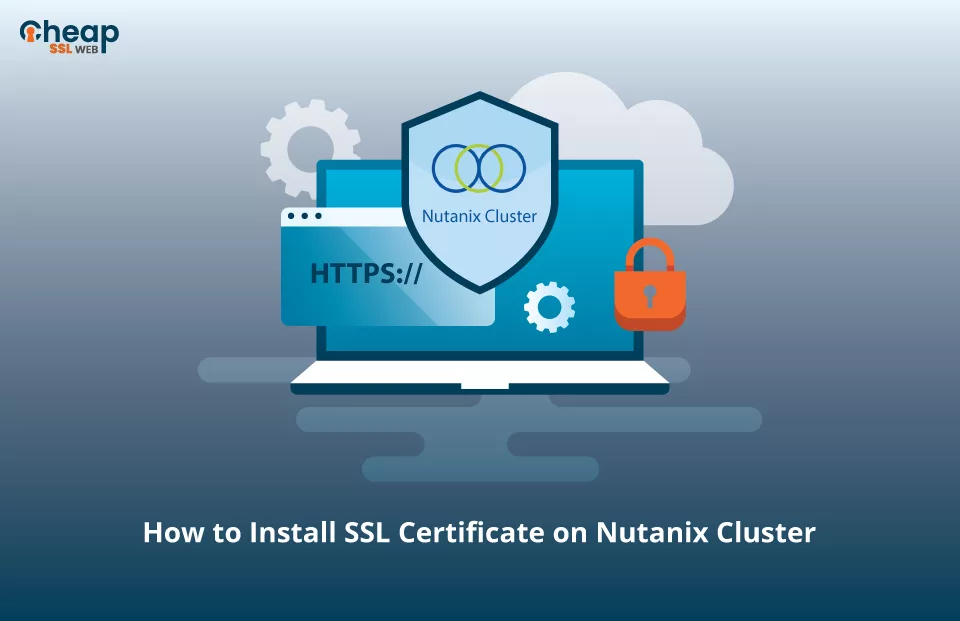How to Install SSL Certificate on Nutanix Cluster?

Steps to Install SSL Certificate on Nutanix Cluster
Welcome to this exceptional tutorial, where I shall guide you through the process of installing an SSL Certificate on your Nutanix Cluster server with the utmost expertise. Rest assured, it will be an effortless endeavor! We shall divide it into three distinct parts to facilitate a comprehensive understanding.
To make things even more rewarding, we will conclude this tutorial by introducing you to a reliable online resource where you can find cost-effective SSL certificates tailored for your Nutanix Cluster.
Part 1: Generating a CSR
This section will explore two diverse methods that you can use to generate a CSR (Certificate Signing Request). However, before discussing those, let me explain what CSR is. A CSR is a file that a certificate authority necessitates to issue an SSL certificate. It encompasses necessary information regarding your server and organization, like your domain and company name, location, etc.
To generate a CSR, you have two methods:
- Use our CSR Generation Tool, or
- Generate it manually.
Regardless of the method you employ to generate your CSR, it is imperative that you exercise utmost diligence in providing accurate and current information. This holds immense significance as any discrepancies identified by the certificate authority within the CSR might lead to the rejection of your request. Thus, exercise caution when entering the requisite details during the SSL certificate acquisition process.
Part 2: Unzip and Extract SSL Certificate & Other Files
This section will explore how to unzip and extract the SSL certificate and other files. Once your CSR has been verified, the certificate authority (CA) will dispatch your SSL certificate and supplementary installation files to your registered email address in the form of a .zip folder. Extract all the files after unzipping the folder, and verify that you possess the following files:
- The .crt file (Primary Certificate)
- The .ca-bundle file (Intermediate Certificate)
- The Private Key File
Part 3: Install the SSL Certificate on the Nutanix Cluster Server
This section will explore how to install the SSL certificate on the Nutanix Cluster server. Follow the steps mentioned below to accomplish the same:
- Login in the Nutanix Console.
- Navigate to the Settings page.
- Click the down arrow inside the gear icon, and from the list, select SSL Certificates. (The SSL Certificate dialog box will appear.)
- In the SSL Certificate dialog box, click Replace Certificate.
- Click the radio button adjacent to Import Key and Certificate, then click Next. (In the SSL Certificate window will appear)
- In the SSL Certificate window, perform these actions:
- From the Private Key Type list, select RSA 2048 bit.
- Under the Private Key section, click Choose file and select the private key.
- Under the Public Certificate section, click Choose file and select the public certificate.
- Under the CA Certificate Chain, click Choose file and select the private key.
- Click Import Files to initiate the SSL certificate import process.
Test the Installation
To confirm the successful deployment of your SSL certificate on the Nutanix Cluster server, it is paramount to test the installation status. A practical tool for this purpose is SSL Checker, which allows you to identify possible vulnerabilities or errors in your SSL configuration.
This tool also provides extensive reports that offer thorough insights about the installation status and pinpoint areas requiring attention. Confirming the installation status of your SSL certificate through SSL testing tools is highly recommended to attain a safe and error-free configuration.
SSL Certificates Installation Tutorials & Guides for Any Servers
